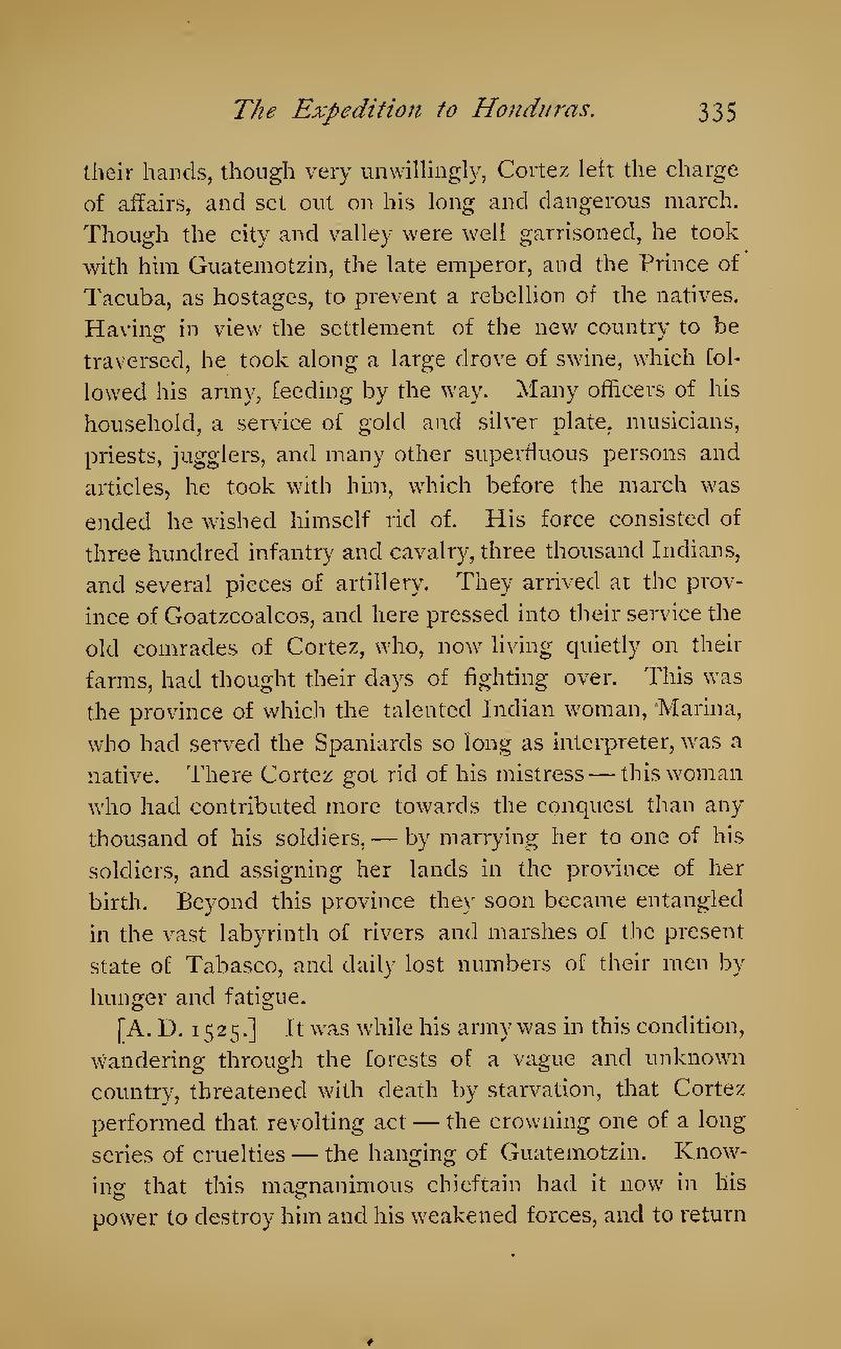their hands, though very unwillingly, Cortez left the charge of affairs, and set out on his long and dangerous march. Though the city and valley were well garrisoned, he took with him Guatemotzin, the late emperor, and the Prince of Tacuba, as hostages, to prevent a rebellion of the natives. Having in view the settlement of the new country to be traversed, he took along a large drove of swine, which followed his army, feeding by the way. Many officers of his household, a service of gold and silver plate, musicians, priests, jugglers, and many other superfluous persons and articles, he took with him, which before the march was ended he wished himself rid of. His force consisted of three hundred infantry and cavalry, three thousand Indians, and several pieces of artillery. They arrived at the province of Coatzcoalcos, and here pressed into their service the old comrades of Cortez, who, now living quietly on their farms, had thought their days of fighting over. This was the province of which the talented Indian woman, Marina, who had served the Spaniards so long as interpreter, was a native. There Cortez got rid of his mistress—this woman who had contributed more towards the conquest than any thousand of his soldiers,—by marrying her to one of his soldiers, and assigning her lands in the province of her birth. Beyond this province they soon became entangled in the vast labyrinth of rivers and marshes of the present state of Tabasco, and daily lost numbers of their men by hunger and fatigue.
[A. D. 1525.] It was while his army was in this condition, wandering through the forests of a vague and unknown country, threatened with death by starvation, that Cortez performed that revolting act—the crowning one of a long series of cruelties—the hanging of Guatemotzin. Knowing that this magnanimous chieftain had it now in his power to destroy him and his weakened forces, and to return
